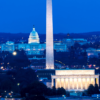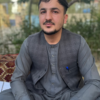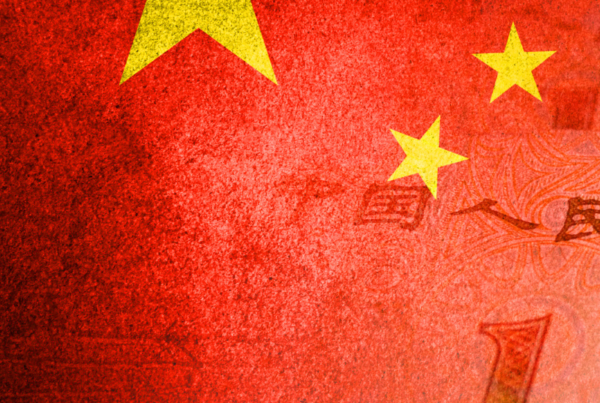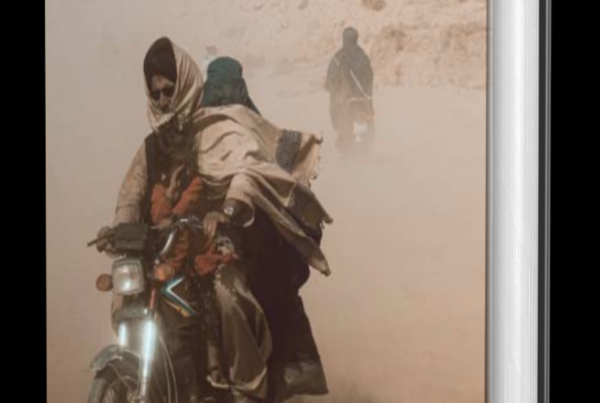PANJSHIR VALLEY, Afghanistan – At first glance, it seems as though life has resumed in the once idyllic hamlet of Afghanistan’s Panjshir Valley: dusty white flags flutter atop mountains in the distance – representations of the dead – women stop by sleepy markets to fill woven baskets with bread, children play by the gushing emerald streams, and young boys and men in traditional pakol hats twist in and out of web mud-walled houses rising from the earth.
Despite still being hailed as the storied center of a battle-charged resistance, few signs of war are left in the small province, some 90 miles from Kabul. Instead, I spot just a couple of trashed U.S.-made military vehicles that fell into the Taliban’s hands amid the chaotic American withdrawal last August. Heavily armed Taliban fighters speed through the unpaved roads, in fact, I am surprised by the sheer number of Taliban at every twist and turn.
However, the deeper I veer off-road, bumping toward remote villages off the well-heeled paths and climbing higher into the clear blue sky, the more the air falls heavy with uncertainty. There are secrets in these hills; that is clear. But is the resistance war against Afghanistan’s new rulers really anything close to potent?
There has long been a military mythology associated with this picturesque valley. Panjshir was the ultimate pivot point, fending off Soviet invasions in the 1980s and the Taliban in the 1990s. And after weeks of clashes, Panjshir was the final area to succumb to the Taliban’s grip last September.
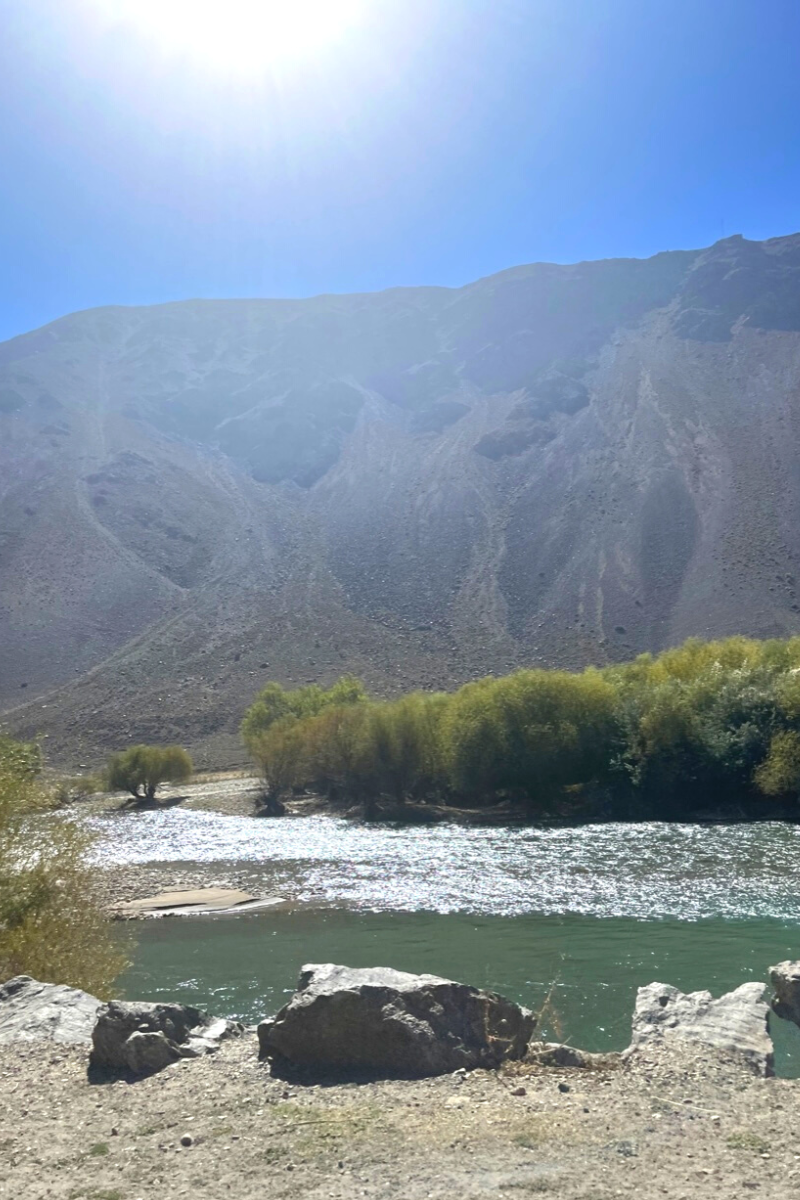
Over the past year, the province has been subject to stories and speculation that it continues to fight off the Taliban presence in a guerilla battle led mainly by the National Resistance Front (NRF) and its exiled leader, Ahmad Masood, the son of the fabled “Lion of Panjshir” anti-Soviet mujaheddin commander, Ahmad Shah Masood.
The young Masood (his father was assassinated by al Qaeda two days before the September 11 attacks, a pre-empted war tactic given he would have been a solid ally to an angry and revenge-seeking United States of America) continues to call for international support to defeat the Taliban domination. The group claims on its website to be battling for “a democratic system with elections, freedom of speech, human and women’s rights, inclusiveness of all ethnic groups in the government, fight corruption and terrorism.”
“The Taliban continue to hold power almost exclusively,” Ramiz Alakbarov, the United Nations’ deputy special representative for Afghanistan, told the Security Council in June. “The emergence and persistence of an armed opposition are largely due to political exclusion.”
While it is evident that the Taliban, formally termed the Islamic Emirate of Afghanistan, controls all eight districts, no side can deny that there is at least a little tit-for-tat blood spilling off the beaten path.
Afghan journalists have repeatedly lamented that they have been blocked from reporting candidly in the secluded areas that bear the brunt of any battles. I am surprised that I can slip through in a well-worn Toyota Corolla without Taliban teams on my tail. My subsequent encounters offer a modest aperture into a murky struggle wedged inside a country wrestling with the aftermath of two decades of foreign occupation and endless combat.
Almost every week, reports emerge of flare-ups and casualties, with both sides accusing each other of criminal behavior and exaggerating their strength and the number of dead. Searching for the truth in the weeds of publicity and propaganda is something of a Sisyphean task. The best I can do is make a rare trip into the land itself and talk to those on the ground with no agenda other than to survive another day.
In the Panjshir village of Kansaar, Gul Hashem – who thinks he is around 47 years old and once proudly fought the Soviet invaders – tells me adamantly that there is no resistance left.
“The fight is over,” he declares, slumped forward, before bemoaning the notion that he is struggling to make ends meet other than a small number of farming jobs.
Shahabuddin, 56, says there is no conflict around him in Peshgaran village; he laments that “the life we are living is with fear under the Taliban.”
I ask about the resistance.
“They might be at the top of the mountain, but there is none here,” he continues, adding that all the military-aged males have left. “There are no youngsters left in our village. They’ve gone to Iran and Kabul. But they have gone.”
I weave further through the unpaved roads of Dara district, deeper into the area of Abdullah Khan, observing the sweat running down the face of laborers – young and old – filling large sacks with potatoes. I see no signs of fighting, but I do see and hear Taliban foot soldiers firing off heavy rifles into no particular target. I sit on a mound of dirt for a moment, watching one young fighter adjust his scope and point his rifle ominously toward people mulling outside a mud hut in the hills.
“The sounds you here, they are not targeting anything,” Mar Jan, a 30-year-old villager who teaches math and biology, mutters. “It is just to scare people.”
The sounds of intimidation reverberate well into the afternoon.
“The fight is not there. The resistance that was there – the Taliban surrounded them all and killed them,” Mar Jan, with a hollowed face and fidgety hands, concurs. “They were in the mountains, and the Taliban surrounded them.”
He claims that the Taliban search homes and night, demanding residents’ hand over their ammunition.
A woman, wrapped in a deep purple scarf, emerges from the heavy farming work. Her name is Anar Gul. She is around 45 and speaks in high-pitched, anxious tones. She vows that her neighbor was resistance but was recently slain. She explains that her brother and son were also apprehended by the Taliban and spent some time in prison but were released a couple of weeks before my late September visit.
Other life-drained faces hover around me, eager to share their stories.
One 15-year-old laborer, says stoically that his father was taken and killed, accused of being a resistance fighter weeks earlier. Over the past few months, the resistance has been slashed in the region, and any fighters still alive have been killed, he emphasizes.
The Panjshiris also harbor mixed feelings regarding their leadership – namely Ahmad Masood and Amrullah Saleh, the former first Vice President of Afghanistan – for leaving the lands soon after the 2021 fall.
“I am super angry at them. We can’t do anything at the moment, but when the right moment comes, we will ask them about this,” Mar Jan says, pining for the days of Masood, the senior.
Gul Hashem notes that he is also “unhappy” that the top echelons did not stay to defend their lands.
“All Afghanistan’s leaders ran away with dollars, living luxury lives, and left all the problems to us,” Abrijan complains.
Other Panjshiris are more forgiving. For one, Shahbudeen asserts that their leaders “are still the best,” and if they had stayed, the outcome would have been grim.
Regardless of the ambiguity, life in Panjshir rolls on. Farmers say they will accept salaries from whoever will pay them, and others sheepishly beg me to take them out of Afghanistan.
There is another common thread about Afghanistan. You often see people of all types and stripes sitting alone on fractured roads staring out into the gray light of nothing. There is no phone in their labor-cracked hands, their pinched and wrinkled faces watching the world go by. I am fascinated by one old Panjshir gentleman, stooped down alone on a jagged, random rock staring out – his eyes shimmering with cataracts, guarding a long file of memory of wars and revolutions. For Afghans, these moments are moments earned rather than lost. To watch another sweltering summer soften into fall is a precious gift not forsaken by those old enough to know many incarnations of their country.
But when you talk to the Taliban, they quickly dismiss any heavy-scale clashes or legitimate concerns to their security apparatus.
“The security situation is normal across Panjshir, but if there is an area we deem necessary (to quell fighting), we will bring forces there,” Abdullahi, a spokesperson for the Taliban Commander in the province, tells me. “For three weeks, we haven’t heard of a fight here for the past few weeks. Everything is normal.”
Well, normal is relative. It seems to be that skirmishes do arise but are becoming fewer and further between. I raise the issue of resistance fighters being hauled into prisons (locals claim this is a nearby school), yet the spokesperson denies that the gulags exist.
Another Talib official inside the Foreign Ministry underscores that the NRF movement “holds no territory, not even a checkpoint, every so often carries out an attack on a Talib target and then can only earn money from outside the country by crying to the west.”
Meanwhile, in a separate meeting Nasrullah Malikzada, the 32-year-old Panjshir Information and Culture Director, echoes the assessment that “all is normal.”
“There are no security threats. One area had some operations a few days ago, but nothing now,” he continues. “You can see for yourself.”
Nasrullah doesn’t stop me from venturing off into the villages known for their resistance efforts. (The Taliban intelligence later got wind of my presence but lost track and didn’t catch back up until after we had departed.) He, too, takes aim at the fleeing leadership.
“They knew the Taliban were going to take over Panjshir, so they should have developed a relationship,” Nasrullah continues. “Now, all they have left to fight is their Facebook.”
The way the Talibs paint it, the resistance is more bark than bite, underscoring the notion that much of the resistance’s top echelons are outside of Afghanistan and thus drumming up momentum behind a keyboard from far away.
However, I encounter some hardcore online activists inside Afghanistan who aren’t afraid to push the envelope with their inflammatory remarks and threats against Taliban top brass.
“They do small attacks and run away,” Assia, a 23-year-old former university student who now dedicates her whole life to propping up the NRF, whispers from the backroom of a distant friend’s home in Kabul.
She admits that almost every home left occupied in the rugged peaks owns a gun but doesn’t appear deterred by the notion that it is no match for the weapon-awash Emirate, emphasizing that if they continue this path, victory is within reach.
Nevertheless, Assia – who has no interest in leaving the beloved land where she was born and raised – rebuffs the suggestion that the leadership should have stayed through the end.
“The leaders shouldn’t be doing the fighting,” she says with conviction. “They should be doing the leadership.”
So, all in all, what remains of the last bastion of rebellion?
From where I sit, clashes could remain an occasional drumbeat high up in the Panjshir wilderness. But whatever small arms rebels might possess, they are no match for the heavily equipped Emirate, courtesy of the U.S.-backed former government forces who fled in the twilight of summer 2021.
And just by force of sheer numbers, the Taliban continues to swell its ranks by the day, due in large part to many such old-guard soldiers returning to their old jobs for mere means of survival, meaning they can send as many reinforcements as necessary should any insurgency movement gain significant momentum.
Moreover, I am somewhat surprised to encounter several Panjshir natives – Tajiks in the Pashtun-dominated Taliban – who have joined the Emirate’s security division on their native lands.
“Resistance is almost to point zero,” Abu Zahid, a 49-year-old commander, vows from outside his base in his home district of Rokha, adding that there was a small amount of jousting a couple of weeks ago, but the streets have been silent since. “A number have been killed either in the fight or surrounded and killed.”
Abdul’s own military experience stems from his very young years fighting the Soviet occupier during the war throughout the 1980s. Soon after the fall last year, he was approached by Taliban elders.
“At that time, there were people on the mountains (fighting), and I wanted to be a bridge,” he explains.
Abdul acknowledges that there has been some backlash to his decision, mainly from the younger generation who grew up under U.S. occupation and are not ready to accept the view that the values of democracy “are not aligned” with their Islamist underpinnings. Still, Abdul guesses that there are around 80-90 Panjshiris who have joined the Taliban.
One such foot soldier is 27-year-old Ahmadi Mujahid from the Abdara District, who quietly joined a year before the last government fell.
“We are an Islamic regime and Islamic country,” he says by way of explanation.
But regardless of which way the issue is sliced, without international support – and the U.S. has clearly exited the Afghan war theater with no appetite to be dragged in – any organized dissent is mildly symbolic at best, poking holes in the Taliban viewpoint that the entire country is experiencing complete peace and security for the first time in decades.
As we wind through the primitive villages, the sun flashing down on the Hindu Kush mountains, I ponder different thoughts. No one can ever really be content with the way wars end. Regardless of who triumphs, they always conclude with masticated lands, traumatized communities, and pockets of restlessness seeking revenge.
“There is almost no existence of the resistance here at all. There might be ten to fifteen fighters in some faraway corner of the mountain. The resistance is only on Facebook and social media; there is no physical resistance,” Nasrullah, the Information and Culture Director, had contended in our meeting. “During the Republic’s time, they had 350,000 Afghan soldiers and another 150,000 foreigners with all the tanks and the RPG. They couldn’t resist then, so how can they resist now?”
He has a wincing point.
Yet the most critical voices on the subject are those left to pick up the pieces, those without the fortune or veracity to run away, those who hold no official title but pray to survive another day. What happens next if the U.S. and other western countries suddenly choose to reverse course and arm a minor opposition? Who pays the price?
For one, I ask Gul Hashem if he wants the resistance war to grow and expand.
“Right now,” he adds with a weathered sigh, turning his leathered face into the full tint of the autumn sunshine. “I am happy that there is no war.”
Maiwand Naweed contributed to this report.



